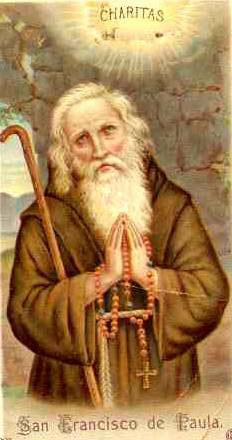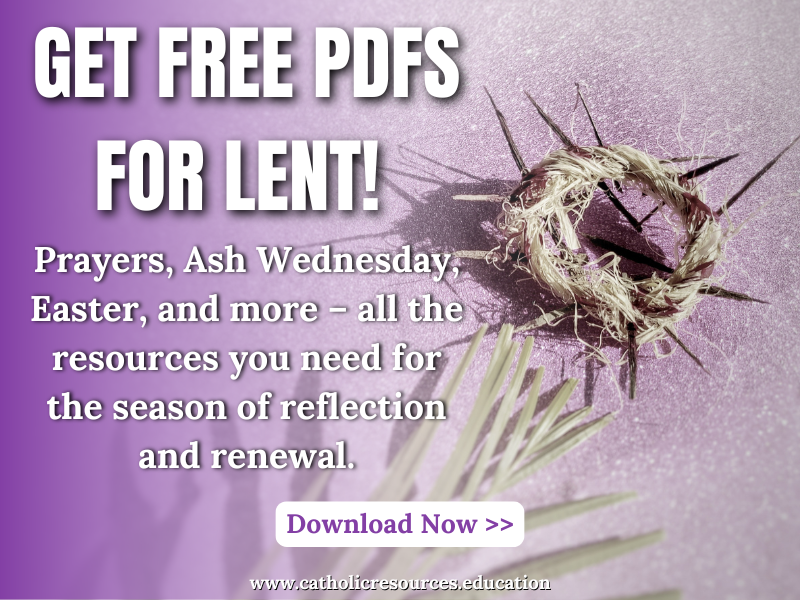We ask you, urgently: don't scroll past this
Dear readers, Catholic Online was de-platformed by Shopify for our pro-life beliefs. They shut down our Catholic Online, Catholic Online School, Prayer Candles, and Catholic Online Learning Resources essential faith tools serving over 1.4 million students and millions of families worldwide. Our founders, now in their 70's, just gave their entire life savings to protect this mission. But fewer than 2% of readers donate. If everyone gave just $5, the cost of a coffee, we could rebuild stronger and keep Catholic education free for all. Stand with us in faith. Thank you.Help Now >
The Bernardines
FREE Catholic Classes
Title of certain sisters of the order of Cîteaux who at the end of the sixteenth and in the seventeenth century, made energetic efforts to restore the primitive observance of their rule. They were the Bernardine Recollects ( Bernardas Recoletas ) in Spain ; the Bernardines of Divine Providence, the Bernardines of the Precious Blood ; and the Bernardines of Flines and of Lille, in France and Savoy ; and some isolated foundations in Belgium and in Peru. The first reform was due to the Abbesses of Las Huelgas of Burgos, who towards the end of the sixteenth century, had reformed the Abbeys of Gradefes, Perales, and St. Anne of Valladolid, where Jane de Ayala introduced the true spirit of Cîteaux. In 1601 St. Anne of Valladolid became the mother-house of the new reform, and in 1606 the constitutions were approved by Paul V. This reform extended as far as the Indies and the Canary Islands.
In 1622 Louise-Theresa-Blanche de Ballon, daughter of Charles-Emmanuel de Ballon, chamberlain of the Duke of Savoy and later ambassador of this prince in France and Spain, began, under the direction of St. Francis of Sales, her near relative, the reform of the monastery of St. Catherine (Savoy). She afterwards went with five sisters to Rumilly and founded the Congregation of Bernardines of Divine Providence . This reform spread into Savoy and France. The constitutions were printed in 1631. In 1634 Mother de Ponçonnas, who with four other Cistercian sisters of Grenoble had embraced the reform, having gone to Paris to found a new house, had the constitutions reprinted with some changes. Louise de Ballon then had them again printed so as to conform to the first constitutions—an action which caused the separation of the convents of France and Savoy. The convents of France formed what is known as the congregation "of St. Bernard". Mother Baudet de Beauregard who succeeded Mother de Ponconnas in the government of the monastery of Paris, changed the name from Bernardines of Divine Providence to Bernardines of the Precious Blood (1654). Their rules were approved by the Abbot of Prières, Vicar General of the Strict Observance of Cîteaux, and the Prior of St. Germain-des-Près, as Vicar General of the Cardinal de Bourbon, received the vows of the new community on the 27th of August of the same year.
The monasteries of the congregation now number (I) Bernardine Recollects, 13; (II) Bernardines founded by Mother de Ballon, 2; (III) Bernardines of Flines, 2; (IV) Bernardines of Lille, 3; (V) Bernardines isolated in Belgium and Peru, 6. The houses of France have been closed by the Government. The Bernardines of today are engaged in teaching and follow a somewhat modified rule.
The Bernardines of Spain rise every day at three o'clock, and on days of great solemnities at two o'clock. For the office they follow the Cistercian Breviary. They fast two days a week from Pentecost tot he 14th of September, four days a week from the 14th of September to Easter Sunday, and every day during Advent, Septuagesima time, and Lent. Meat is allowed three times a week except during Advent and the nine weeks before Easter Sunday. Their habit consists of a woolen robe and their bed is conformable to the regulations. They live in community in sickness as well as in health. With the Bernardines of Mother de Ballon this rule is still more mitigated. They rise at five o'clock summer and winter. Silence is kept except during the recreation which follows dinner and supper. They fast two days a week from Easter Sunday to Pentecost, and on Saturday also during Advent. They abstain from meat on the Wednesdays, Fridays, and Saturdays of the whole year.
Join the Movement
When you sign up below, you don't just join an email list - you're joining an entire movement for Free world class Catholic education.

-

- Stations of the Cross
- Easter / Lent
- 5 Lenten Prayers
- Ash Wednesday
- Living Lent
- 7 Morning Prayers
- Mysteries of the Rosary
- Litany of the Bl. Virgin Mary
- Popular Saints
- Popular Prayers
- Female Saints
- Saint Feast Days by Month
- Pray the Rosary
Pope Francis’ April Prayer Intention: Using Technology to Strengthen Human Connections
Finding Peace Through Prayer in a World of Worry
Trump Administration Withholds Federal Grants from Planned Parenthood Over DEI and Civil Rights Concerns
Daily Catholic
 Daily Readings for Wednesday, April 02, 2025
Daily Readings for Wednesday, April 02, 2025 St. Francis of Paola: Saint of the Day for Wednesday, April 02, 2025
St. Francis of Paola: Saint of the Day for Wednesday, April 02, 2025 Prayer for God's Help in Daily Actions: Prayer of the Day for Friday, March 14, 2025
Prayer for God's Help in Daily Actions: Prayer of the Day for Friday, March 14, 2025 Daily Readings for Tuesday, April 01, 2025
Daily Readings for Tuesday, April 01, 2025 St. Hugh of Grenoble: Saint of the Day for Tuesday, April 01, 2025
St. Hugh of Grenoble: Saint of the Day for Tuesday, April 01, 2025- To Perceive Animals as God's Gifts: Prayer of the Day for Thursday, March 13, 2025
![]()
Copyright 2025 Catholic Online. All materials contained on this site, whether written, audible or visual are the exclusive property of Catholic Online and are protected under U.S. and International copyright laws, © Copyright 2025 Catholic Online. Any unauthorized use, without prior written consent of Catholic Online is strictly forbidden and prohibited.
Catholic Online is a Project of Your Catholic Voice Foundation, a Not-for-Profit Corporation. Your Catholic Voice Foundation has been granted a recognition of tax exemption under Section 501(c)(3) of the Internal Revenue Code. Federal Tax Identification Number: 81-0596847. Your gift is tax-deductible as allowed by law.


 Daily Readings for Wednesday, April 02, 2025
Daily Readings for Wednesday, April 02, 2025 St. Francis of Paola: Saint of the Day for Wednesday, April 02, 2025
St. Francis of Paola: Saint of the Day for Wednesday, April 02, 2025 Prayer for God's Help in Daily Actions: Prayer of the Day for Friday, March 14, 2025
Prayer for God's Help in Daily Actions: Prayer of the Day for Friday, March 14, 2025 St. Hugh of Grenoble: Saint of the Day for Tuesday, April 01, 2025
St. Hugh of Grenoble: Saint of the Day for Tuesday, April 01, 2025

